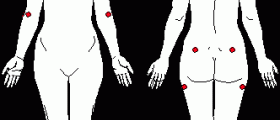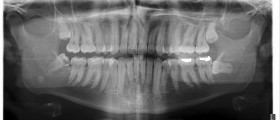If you have noticed a lump in the throat, you are probably worried about it since you do not know what to expect from it or how to treat it. Most commonly, this is not a serious problem, and lumps in the throat area appear and disappear on their own. They are sometimes a product of a spasm in the cricopharyngeus muscle.
Symptoms of a Lump in Throat
Once you start experiencing this phenomenon, you will be feeling as if you have got a tennis ball, golf ball, fur ball, or any kind of ball stuck in your throat area. Thus, every time you press the area, it will feel tight and you are likely to feel strangled when wearing a tie or any similar piece of clothing.
The throat may appear swollen and may bother you during the day, being absent at night and vice versa. Usually, stress makes the lump escalate. Otherwise, the problem is best handled in the morning, with the situation getting gradually worse during the day. You may experience difficulties swallowing but you may also find that eating actually makes the problem less prominent.
- Prevalence ranges from 3.5% to 46% depending on the population and diagnostic criteria - 3.5% prevalence of globus syndrome (Cross-sectional study of 995 young, healthy Iranians assessed using the Rome III diagnostic criteria for functional GI disorders); 6.0% prevalence of globus feeling for >3 months (Survey of 1,158 women from general population in United Kingdom, not using Rome III criteria); 46% have at one point in their life "felt like a lump is in their throat" (Interview of 147 healthy individuals in United Kingdom, not using Rome III criteria).
- Globus is managed in 6.7 per 100,000 encounters in primary care.
- 4-5% of all ENT outpatient referrals are due to globus sensation.
- Women may be affected more often (reported in some studies in a 2:1 ratio compared to males), however some studies find no difference in incidence between sexes.
- Middle-aged (35-54 years old) may be commonly affected, but some studies found no association of globus prevalence with age.
- Elevated upper esophgeal sphincter (UES) resting pressure may be a factor in as many as 68% of patients with globus sensation, though some studies have not been able to show an association of UES pressure to globus. Stress, respiration and distal esophageal acid exposure may all contribute to elevated UES pressure. Results of UES resting pressure in globus studies remain inconclusive due the small sample sizes and varying measurement techniques.
- Associations of globus with affective symptoms have largely been determined by numerous cross-sectional studies using validated scales. 96% of patients with globus symptoms report exacerbations during periods of "high emotional intensity". In a prospective cohort of 36 globus patients, a negative diagnostic workup for malignancy led to a reduction in anxiety levels. This reduction was the strongest predictor for globus symptom improvement.
- Prevalence of globus sensation in reflux (15-28%) appears to be higher than patients without reflux (4-10%). Disconcordance in studies linking esophageal pH to globus symptoms in patients with reflux. Conflicting evidence whether there is a difference in pH in controls vs. globus patients with reflux. Many patients with reflux and globus may have non-acidic reflux, suggesting the role esophageal distention in globus, independent of acid.
Under the Hood
Our swallowing tube, otherwise known as the esophagus, has two valves inside it. These are usually slightly contracted. Yet, when we swallow food the valves relax in order to let it pass. However, sometimes these light contractions become spasms, leading to the above-mentioned symptoms.
So, the best possible way of dealing with this problem is to relax in any way possible. Stress is the main cause and, therefore, any kind of stress removal technique, be it alcohol drinking or sleeping, will reduce the symptoms and intensity of the lump you can feel in your throat.
Nevertheless, it is best for you to pay your doctor a visit since there are other possible culprits which can trigger lumps in the throat. Throat cancer may result in lumps. However, these are not felt in most cases. So, you need a good throat examination, where your doctor will check if everything is in order. Additionally, the voice box and neck area should be examined as well.
Sometimes, the mere fact that your throat lump problem is not anything serious is enough to help you relax and get rid of it. Know that you will get better. It might take weeks or even months, but the lump feeling will disappear. As for medications, Valium may work for relaxing. Take one Valium pill during the weekend. If the lump stops being prominent, stress is the trigger.















-vs-Trigger-Points-(Myofascial-Pain-Syndrome)_f_280x120.jpg)


Your thoughts on this
Loading...